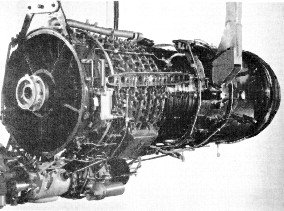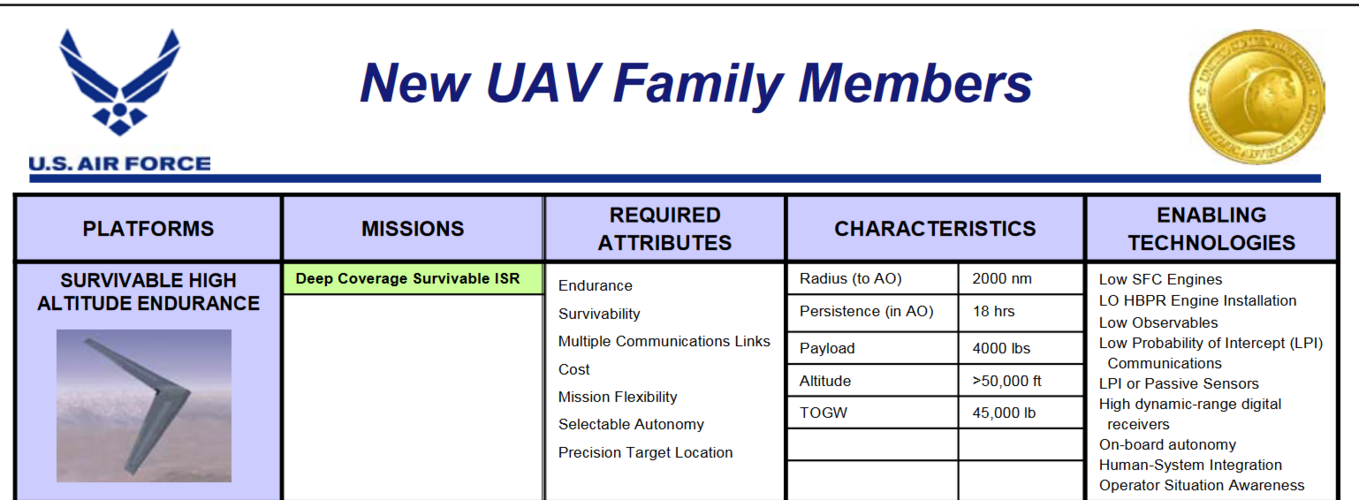- Joined
- 6 August 2007
- Messages
- 3,370
- Reaction score
- 3,563
In 2006 Nick Cook published an article in Janes, etc. describing a Lockheed project called Penetrating High Altitude Endurance (PHAE). This was described as a HALE UAV much like Polecat, Tier 3, Tier 3-, etc. etc. etc.
Source:
http://www.janes.com/defence/news/idr/idr060321_1_n.shtml
Here's the part I found interesting at the time:
"The new UAV, sometimes known as the Penetrating High Altitude Endurance (PHAE), is believed to be capable of operating at the 70,000-80,000 ft altitudes used by the U-2. One report refers to the aircraft using engines from an inventory that has been in storage since the 1970s. This almost certainly refers to the General Electric J97-GE-3 engine for the Teledyne Ryan AQM-91 Compass Arrow UAV (a project terminated in 1971). In 1998, a NASA paper reported that 24 J97 engines were in storage at the agency's Ames research centre. The Compass Arrow exceeded 80,000 ft during tests, the highest unclassified altitude ever recorded for a subsonic jet-powered aircraft. The J97 was rated at around 25 kN and the new UAV is probably a twin-engine design. "
Now I finally remember why I found it interesting:
Source:
http://www.flightglobal.com/articles/1995/09/27/24134/loral-offers-heavy-lift-uav-platform.html
"The Loral/Frontier Systems W570 flying-wing-concept vehicle has a 50m wingspan and a gross take-off weight of between 11,700kg and 13,800kg. It would be able to loiter at 80,000ft (24,400m), with up to 42h on station, fielding an unrefuelled range of 34,600km (18,700nm) and a total mission duration of 60h. The W570 would carry payloads of 4,540kg and heavier."
...
"If funding becomes available, Loral proposes that 24 General Electric engines, built in the 1980s for high-altitude UAVs and now in wind tunnel testing at NASA Ames, could be pressed into service as interim power plants."
Without quoting the whole abstract, Loral was pitching W570 around for the role we now know as Sensorcraft - and they were pitching it with the same engines Cook's sources mentioned.
I can't for the life of me recall who owns that Loral unit now, but maybe PHAE, if it exists, is actually W570. Maybe Loral found someone receptive to their pitches in the late 90s.
(It may be worthy of note that while Polecat and W570 are very similar, they appear to have very different family trees)
http://en.wikipedia.org/wiki/General_Electric_J79
A paper that talks a little about why NASA had them is here:
http://ntrs.nasa.gov/archive/nasa/casi.ntrs.nasa.gov/19970004802_1996097759.pdf
(this also talks a little about TEAL RAIN)
Source:
http://www.janes.com/defence/news/idr/idr060321_1_n.shtml
Here's the part I found interesting at the time:
"The new UAV, sometimes known as the Penetrating High Altitude Endurance (PHAE), is believed to be capable of operating at the 70,000-80,000 ft altitudes used by the U-2. One report refers to the aircraft using engines from an inventory that has been in storage since the 1970s. This almost certainly refers to the General Electric J97-GE-3 engine for the Teledyne Ryan AQM-91 Compass Arrow UAV (a project terminated in 1971). In 1998, a NASA paper reported that 24 J97 engines were in storage at the agency's Ames research centre. The Compass Arrow exceeded 80,000 ft during tests, the highest unclassified altitude ever recorded for a subsonic jet-powered aircraft. The J97 was rated at around 25 kN and the new UAV is probably a twin-engine design. "
Now I finally remember why I found it interesting:
Source:
http://www.flightglobal.com/articles/1995/09/27/24134/loral-offers-heavy-lift-uav-platform.html
"The Loral/Frontier Systems W570 flying-wing-concept vehicle has a 50m wingspan and a gross take-off weight of between 11,700kg and 13,800kg. It would be able to loiter at 80,000ft (24,400m), with up to 42h on station, fielding an unrefuelled range of 34,600km (18,700nm) and a total mission duration of 60h. The W570 would carry payloads of 4,540kg and heavier."
...
"If funding becomes available, Loral proposes that 24 General Electric engines, built in the 1980s for high-altitude UAVs and now in wind tunnel testing at NASA Ames, could be pressed into service as interim power plants."
Without quoting the whole abstract, Loral was pitching W570 around for the role we now know as Sensorcraft - and they were pitching it with the same engines Cook's sources mentioned.
I can't for the life of me recall who owns that Loral unit now, but maybe PHAE, if it exists, is actually W570. Maybe Loral found someone receptive to their pitches in the late 90s.
(It may be worthy of note that while Polecat and W570 are very similar, they appear to have very different family trees)
http://en.wikipedia.org/wiki/General_Electric_J79
A paper that talks a little about why NASA had them is here:
http://ntrs.nasa.gov/archive/nasa/casi.ntrs.nasa.gov/19970004802_1996097759.pdf
(this also talks a little about TEAL RAIN)










